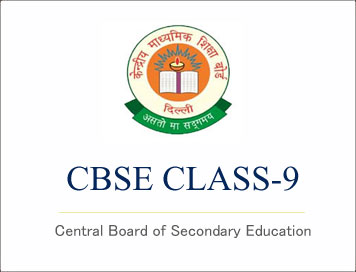CBSE Class-9 Syllabus 2018-19 (Computer Applications)
Disclaimer: This website is NOT associated with CBSE, for official website of CBSE visit - www.cbse.gov.in
CBSE Class-9 Syllabus 2018-19 (Computer Applications)
COMPUTER APPLICATIONS
CLASS IX
(Code No.165)
Effective from the session 2018-19
1. Prerequisites
No background in computer science is required.
2. Learning Outcomes
- Familiarity with basics of computers.
- Ability to navigate the file system.
- Create and edit rich text documents, spreadsheets, and presentations.
- Perform basic data manipulation using spreadsheets.
- Use Indian languages in documents.
- Send and receive emails, follow email etiquette, and communicate over the internet.
- Create and upload videos.
- Safe and correct usage of websites, social networks, chat sites, and email.
- Distribution of Marks
3. Distribution of Marks
|
Unit No. |
Unit Name |
Marks |
| 1. | Basics of Information Technology |
5 |
| 2. | Cyber safety |
10 |
| 3. | Office Tools |
5 |
| 4. | Scratch/Python |
10 |
| 5. | Lab Exercises |
70 |
| Total |
100 |
4.1. Unit 1: Basics of Information Technology
- Familiarity with the basics of computers: design of computers, and overview of communication technologies
- Computer Systems: characteristics of a computer, components of a computer system – CPU, memory, storage devices and I/O devices
- Memory: primary (RAM and ROM) and secondary memory
- Storage devices: hard disk, CD ROM, DVD, pen/flash drive, memory stick
- I/O devices: keyboard, mouse, monitor, printer, scanner, web camera
- Types of software: system software (operating systems), application software, mobile applications
- Operating systems: kernel, device drivers, and file systems (very basic idea)
- Computer networking: wired/wireless communication, common protocols: Wi-Fi, Bluetooth, cloud computers (private/public)
- Multimedia: images, audio, video, animation
- Chat sites, and social networks.
4.2. Unit 2: Cyber-safety
- Safely browsing the web and using social networks: identity protection, proper usage of passwords, privacy, confidentiality of information, cyber stalking, reporting cybercrimes
- Safely accessing websites: viruses and malware
4.3. Unit 3: Office tools
- Introduction to a word processor: create and save a document.
- Edit and format text: text style (B, I, U), font type, font size, text colour, alignment of text. Format paragraphs with line and/or paragraph spacing. Add headers and footers, numbering pages, grammar and spell check utilities, subscript and superscript, insert symbols, use print preview, and print a document.
- Insert pictures, change the page setting, add bullets and numbering, borders and shading, and insert tables – insert/delete rows and columns, merge and split cells.
- Use auto-format, track changes, review comments, use of drawing tools, shapes and mathematical symbols.
- Presentation tool: understand the concept of slide shows, basic elements of a slide, different types of slide layouts, create and save a presentation, and learn about the different views of a slide set – normal view, slide sorter view and hand-outs.
- Edit and format a slide: add titles, subtitles, text, background, and watermark, headers and footers, and slide numbers.
- Insert pictures from files, create animations, add sound effects, and rehearse timings.
- Spreadsheets: concept of a worksheet and a workbook, create and save a worksheet.
- Working with a spreadsheet: enter numbers, text, date/time, series using auto fill; edit and format a worksheet including changing the colour, size, font, alignment of text; insert and delete cells, rows and columns. Enter a formula using the operators (+,-,*, /), refer to cells, and print a worksheet.
- Use simple statistical functions: SUM (), AVERAGE (), MAX (), MIN (), IF () (without compound statements); embed charts of various types: line, pie, scatter, bar and area in a worksheet.
Click Here To Download Full Syllabus
Courtesy: CBSE
